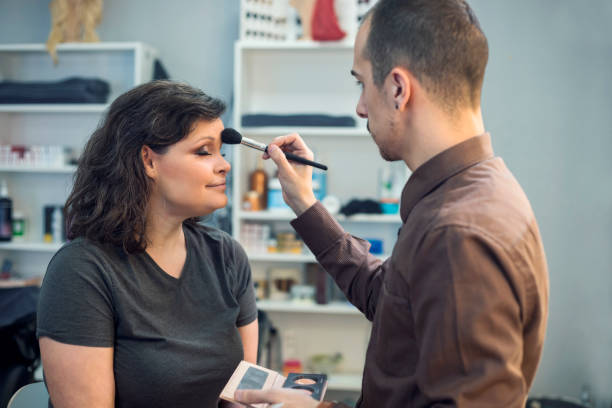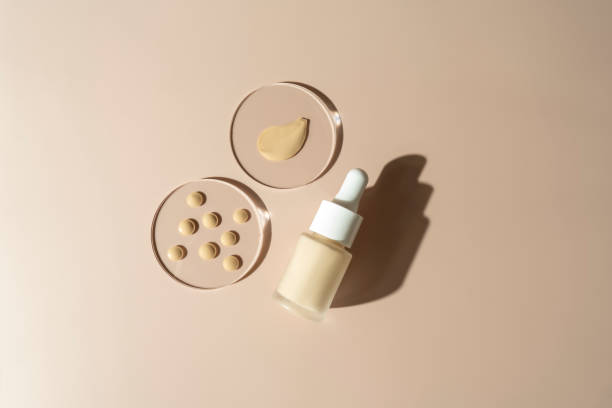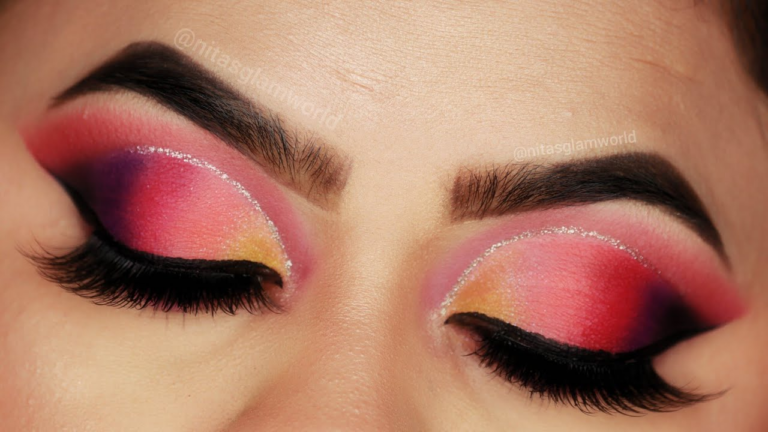Makeup brushes are the unsung heroes of a stunning makeup application. Whether you’re aiming for fuller coverage or the lightest coverage possible, the right brush can make a world of difference. This guide will not only reveal the vast world of brushes and their specific uses but will also demystify techniques to help you achieve everything from a sheer, natural-looking finish to good full-coverage foundations. As you learn to master the art of using makeup brushes, you’ll find that your makeup not just looks better but also feels light and fresh on your skin.
Understanding Your Makeup Brushes
Makeup brushes come in a dizzying array of shapes, sizes, and textures. Knowing which brush to use for specific makeup applications is essential for a flawless look.
Types of Makeup Brushes and Their Uses
- Foundation Brush: Used to apply and blend liquid foundations for medium to full coverage.
- Powder Brush: Perfect for lightweight foundations and setting powder, providing full coverage without looking cakey.
- Angled Blush Brush: This brush allows for precise placement and blending of blush to enhance cheekbones with a natural matte finish.
- Eyeshadow Brush: Flat and rounded, this brush is essential for applying a base color across the eyelid.
- Blending Brush: With fluffier bristles, it’s used to blend eyeshadows for a seamless effect.
- Eyeliner Brush: Sharp and angled or fine-pointed for applying gel, liquid, or powder eyeliner.
Understanding the specific function of each brush will help you apply your makeup with much more precision and effect.

The Anatomy of a Makeup Brush
To grasp how to use makeup brushes effectively, it’s important to understand their parts:
- Handle: Usually made of wood or plastic, it provides grip for control.
- Ferrule: The metal part that connects the handle to the bristles and provides stability.
- Bristles: Can be natural or synthetic and are crucial in determining the brush’s function.
Natural vs. Synthetic Bristles
When selecting makeup brushes, the bristle type plays a significant role in the application:
- Natural Bristles: Usually made from animal hair, they are perfect for powder-based makeup, providing a softer, more diffuse look.
- Synthetic Bristles: Made from man-made materials like nylon, they’re ideal for cream and liquid makeup for a smoother application.
How to Use Different Brushes for a Flawless Look
Achieving a flawless makeup look isn’t just about the products you use but also the tools you apply them with. Understanding how to use various brushes can give you the best lightweight to full-coverage foundation application.
Foundation Brush Techniques
– Liquid and Cream Foundations: Start by dotting your foundation on the face and then using the flat part of the brush to blend it outwards for even coverage. This method ensures that the product felt light on the skin and avoids a heavy, cakey look. – Powder Foundations: Use the dense bristles to buff the foundation into the skin in circular motions for buildable coverage. – Stippling for Airbrushed Effect: Lightly tap (or stipple) the brush over areas where you want extra coverage, this could also provide a natural-looking finish while still offering the coverage you need.
Eye Makeup Brush Mastery
The key to beautiful eye makeup is layering and blending. A flat brush is best for packing color onto the lid, while a crease brush helps apply color accurately in the crease.
- Layering: Begin with a base color using a flat eyeshadow brush and build up with darker shades using a crease brush.
- Blending: A clean, fluffy blending brush is perfect for softening any harsh lines, providing a gradient effect.
- Smudging: Use a smaller, denser brush to smudge eyeliner or shadow along the lash line for a smokey look.
Contour and Blush Brush Tips
Using an angled contour brush, draw a lightweight, sheer line underneath your cheekbones, and blend upwards. For blush, smile and apply a natural shade to the apples of the cheeks with a fluffy brush, blending outward towards the temples.
Highlighting with a Fan Brush
A fan brush, often overlooked, can provide sheerer coverage for a subtle glow or can pack on a highlighter for a more dramatic effect. Sweep it along the high points of the face where light naturally hits, like brow bones, the center of the nose, and the cupid’s bow.

Keeping Your Makeup Brushes in Top Condition
Great makeup application starts with clean, well-cared-for brushes.
How to Clean Your Makeup Brushes
A simple brush cleansing routine includes the following steps:
- Wet the bristles with lukewarm water.
- Place a drop of brush cleaner or mild soap in the palm of your hand.
- Gently massage the tips of the bristles in your palm.
Storing Your Brushes Correctly
| Brush Type | Best Storage Solution |
|---|---|
| Eye Brushes | Upright in a holder or lying flat |
| Face Brushes | Separately to avoid cross-contamination |
| Specialty Brushes | In protective cases |
Storing your brushes correctly ensures they maintain their shape and remain hygienic for use.
Advanced Makeup Brush Tips and Tricks
After mastering the basics, it’s time to enhance your skills with some advanced techniques that can elevate your makeup game.
Blending with Brushes for a Natural Look
Blending is the key to a natural-looking makeup application. The magic lies in the technique:
- Seamless transition: When working with eyeshadows, use a clean blending brush to gently go over the edges in a windshield wiper motion to create a smooth transition between colors.
- Layering: By starting with a light hand, you can slowly build up the product for a more controlled and buildable coverage. This prevents a heavy-handed application and ensures a breathable, lightweight feel on the skin.
- Mixing textures: Using a brush designed for creams or liquids to apply a powder can create a more diffuse, sheer application, offering a softer and more natural finish.
Correcting Makeup Mistakes with Brushes
Even the most experienced makeup enthusiasts can slip up, but brushes can also be saviors in correcting those mistakes:
- Flick away fallout: A small fan brush can gently remove eyeshadow fallout without disturbing your foundation.
- Soften over-application: If you’ve applied too much blush or bronzer, a clean fluffy powder brush can diffuse and soften the product.
- Sharper lines: For a sharp eyeshadow or liner look that’s gone awry, use a flat concealer brush with a bit of foundation to clean up the edges.

Conclusion
To sum up, the art of using makeup brushes doesn’t have to be complicated. By understanding the various types, mastering the techniques for a good full-coverage to a sheerer coverage application, and knowing how to maintain your tools, you can achieve a professional, natural-looking makeup finish. Brushes can truly be the extension of your artistic hand – the key is patience and practice. So, set forth with your bristle companions and make your makeup sessions a creative and fulfilling experience!
FAQs
Which brush is best for a full-coverage foundation application?
A flat-top kabuki brush is ideal for applying liquid and cream full-coverage foundations. The dense bristles help in buffing the product into the skin evenly, giving you that flawless finish.
Can I use the same brush for applying concealer and eyeshadow?
While you technically could use the same brush, it’s not recommended. Concealer brushes are usually denser to provide good full-coverage, while eyeshadow brushes have softer bristles for a lighter touch and blending ability.
How often should makeup brushes be cleaned?
Ideally, you should clean your brushes once a week to preventbuildup and ensure they are hygienic for use. However, brushes used for liquid or cream products may require more frequent cleaning.
What’s the best way to dry makeup brushes after cleaning?
After gently squeezing out the excess water, reshape the brush head and lay them flat on a clean towel. Make sure the bristles are hanging off the edge of a counter to allow air circulation and prevent moisture from getting into the handle.
Are natural or synthetic brushes better for sensitive skin?
Synthetic brushes are generally better for sensitive skin as they are less likely to harbor bacteria and allergens compared to natural bristles. They’re also easier to clean and maintain.
By adhering to these guidelines, not only will your makeup application improve, but you’ll also prolong the life of your brushes and protect your skin from potential irritants. Brushes are an investment in your beauty routine and, with proper care and technique, can be your partners in creating countless looks, from the most natural to the most glamorous.








